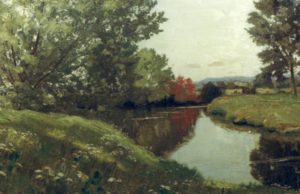Home >>
Books
You can order the books below by emailing us or through PayPal.

Farmington, Connecticut: The Village of Beautiful Homes (“The Green Book”), $30; $10 for index only
First published in 1906, this 211-page book features photographs of “every home in town” in 1906 and more than 40 articles on the town’s history, on topics including:
- “Old Houses in Farmington”
- “Farmington Schools”
- “The Congregational Church”
- “Tunxis Sepus”
- “A True Story of Old Times in Farmington”
- “Ferns and Birds of Farmington”
- and many others
The index to the “Green Book” is included for free.The 27-page index to the Green Book was prepared in 1999 by the Farmington Historical Society. The first section is a standard alphabetical and subject index. The second section is a page-by-page guide to the current physical location of the buildings or objects that appear in the book. The index can be purchased separately for $10.

Farmington in Connecticut by Christopher Bickford, $35
“Long recognized for its outstanding architecture, Farmington can also rejoice in a remarkable history spanning more than three centuries and embracing the major themes in our nation’s development. Frontier settlement, agricultural town, commercial and industrial center, elegant but sleepy village, modern suburb: Farmington has indeed experienced all of these transitions.”

Speaking for Ourselves: African American Life in Farmington, CT, $10
This 50-page paperback was written by Barbara Donahue and the Farmington Historical Society research team in 1998. “The traditional image of Farmington, Connecticut is that of a town whose population has always been as white as the houses on Main Street. Not so. Farmington played a key role in the Amistad drama. People of color have been part of this town since almost its beginning, a small but significant minority whose experience reflects America’s continuing, sometimes stumbling, quest for freedom. Come meet some of these people. Hear the stories they have to tell.” – page 1

Antebellum Shelf Clock Making in Farmington and Unionville Villages, Connecticut by Snowden Taylor and Mary Jane Dapkus, $25
This fully-referenced work documents early 19th century shelf clock making in Farmington and Unionville. Included are photographs of over 150 clocks, movements, and labels, with many examples by previously unknown makers. It describes the authors’ detective work in uncovering new information and sources connecting the clock makers’ lives with facets of Antebellum American history. Among them are: industrialization, child labor, the Temperance movement, insolvency, slavery and abolitionism, frontier medicine, Westward migration, a mysterious Illinois clock factory, a young Illinois lawyer named Abraham Lincoln, and the latter’s early law partner, Stephen T. Logan.
About the authors: A retired professor of physics from Stevens Institute of Technology in Hoboken, NJ, noted author and horological researcher Snowden Taylor (1924-2019), is perhaps best known as co-author with the late Kenneth D. Roberts, of the book entitled Eli Terry and the Connecticut Shelf Clock (2nd ed., 1994). He served for 31 years as editor of the very popular Research Activities & News Column featured in the bi- monthly magazine, Clock & Watch Bulletin of the NAWCC. Independent historian and former curator Mary Jane Dapkus’s articles have appeared in the NAWCC’s Clock & Watch Bulletin, and in the Cog Counters’ Journal. She serves as contributing editor of the Timepiece Journal of the American Clock & Watch Museum.

Artists in Farmington: Biographical Sketches presented by the Farmington Historical Society, $20
Photographic booklet – the Clare Brett Smith exhibit, $20



